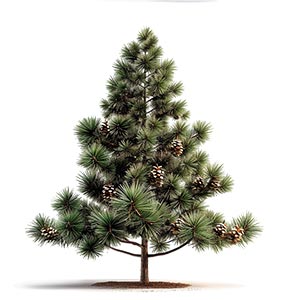Pine, a notable ingredient in perfumery, is appreciated for its crisp, clean, and refreshing aroma. Derived from various species of pine trees, it imparts a distinctively fresh and invigorating scent to fragrances. Historically, Pine has been used in fragrances for its natural, outdoorsy essence. It captures the essence of forest air and earthy woodiness, making it a popular choice for adding a natural and vibrant touch to fragrances. In fragrance compositions, Pine is often utilized to create a sense of freshness and vitality. It pairs well with other woody and green notes, enhancing the overall depth and complexity of the scent. Its presence in a fragrance can evoke the feeling of being in a dense, lush forest, providing a grounding and rejuvenating experience.
Natural or Synthetic?
The natural extraction of pine oil typically involves steam distillation of the needles and twigs. This process harnesses the volatile compounds in pine, creating an essential oil that captures the scent of the tree. The cost of extraction and the quantity of raw materials needed can be high, leading to the creation of synthetic alternatives. Synthetic pine scents are often derived from turpentine oil, which is processed through various chemical treatments to replicate the natural pine aroma. Turpentine oil itself is obtained from pine resin. The synthetic versions offer a more consistent and often more affordable option than natural extraction, making them popular in large-scale commercial applications.
Fragrance Families Pine Most Commonly Found In
Show fragrances that contain Pine as a note



